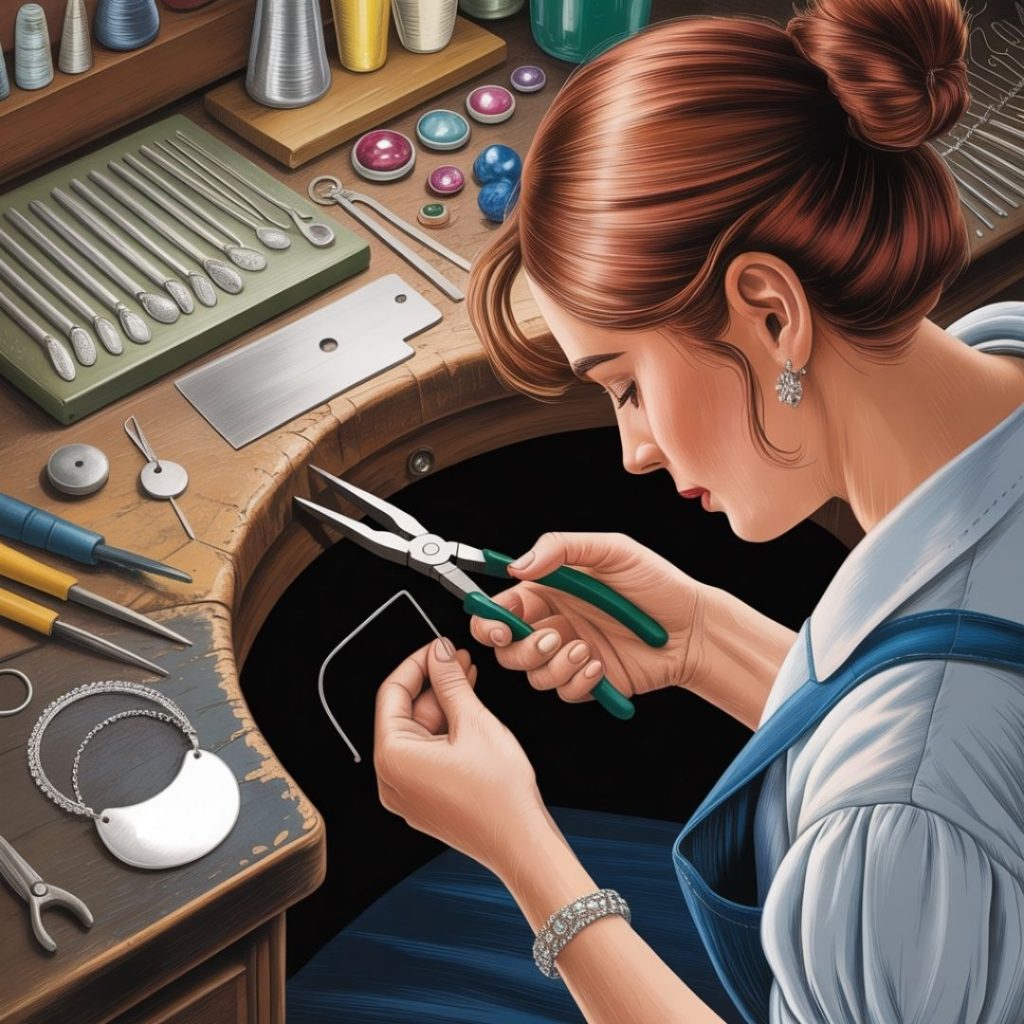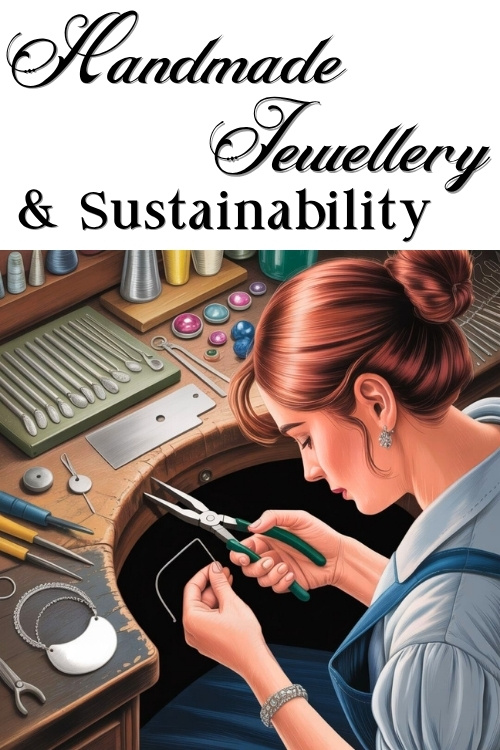Estimated reading time: 4 minutes
Sustainability isn’t just a trend, it’s becoming a core value for many customers and makers alike. As a handmade jewellery artist, you have the power to make thoughtful choices that reduce environmental impact and create truly meaningful pieces.
Whether you’re just starting out or looking to improve your existing process, this guide will walk you through simple, practical ways to make your jewellery business more sustainable, from materials to packaging and waste management.
Let’s explore where you can make a difference.
Jump to:
1. Sustainable Materials
Metals
Metals are the backbone of most jewellery, and your choice of metal can make a big sustainability impact.
- Recycled metals: These are made from post-consumer or post-industrial waste, reducing the demand for newly mined resources. Gold and silver are especially well-suited for recycling, and many suppliers now offer fully recycled options.
- Fairtrade and Fairmined metals: If recycled metals aren’t an option, look for Fairtrade or Fairmined alternatives. These certifications ensure that the metal was mined under ethical and environmentally responsible conditions, supporting small-scale miners and their communities.
Choosing ethical metals isn’t just good for the planet, it also makes your jewellery more appealing to conscious buyers.
Gemstones
Gemstones are where sustainability gets a bit more complex, but also more exciting. Traditionally mined gems can come with a heavy environmental and ethical footprint, but there are alternatives.
- Reclaimed gemstones: These are gems that have been salvaged from old or broken jewellery, cleaned, and sometimes re-cut. Reclaiming stones reduces waste and skips the mining process entirely which dramatically lowers their environmental impact.
🔗Want to know more about reclaimed gems and why they’re a powerful sustainable option? Reclaimed and Recycled Gemstones: The Sustainable Gems
2. Your Making Process
Sustainability isn’t just about what you use, it’s also about how you work.
- Energy-conscious tools: Can a hand tool replace an electric one? Small shifts in your process can save energy over time.
- Chemical use: Try to reduce harsh chemicals in cleaning and finishing where possible. Some natural alternatives are just as effective and safer for both you and the environment.
You don’t need to overhaul everything overnight. Start with what’s doable and build from there.
3. Waste Management
Let’s be real: jewellery-making creates waste. But with a little planning, much of it can be reduced or reused.
- Metal scraps: Don’t toss them! Many jewellers melt down offcuts or incorporate them into textured, organic designs. What might’ve been discarded can become a design feature.
- Gemstone fragments: Tiny offcuts from broken or damaged stones can be used in mosaic or resin designs, or even as decorative elements in packaging or photography.
- Recycling and reuse: Set up a system to sort and save your offcuts, dust, and packaging materials. Over time, you’ll likely find creative ways to repurpose them.
4. Eco-Friendly Packaging
Your jewellery may be sustainable, but does your packaging match?
The good news is there are plenty of eco-conscious packaging options available that are still beautiful, protective, and brand-worthy.
- Jewellery boxes: Opt for recycled or FSC-certified cardboard boxes with sustainable inserts. Some companies even offer foam made from paper industry by-products, cutting down on petroleum-based alternatives.
- Mailers: Swap plastic padded envelopes for recycled cardboard boxes or plastic-free padded mailers. These are sturdier, better for the environment, and show customers you care.
💡 Pro tip: Include a little note explaining your packaging choices as customers love knowing the story behind their unboxing experience.
Final Thoughts
Sustainability in jewellery isn’t about perfection, it’s about progress. Every conscious decision you make, whether it’s choosing recycled silver, swapping out your packaging, or reclaiming old gems, adds up to real impact.
Being a sustainable maker doesn’t mean sacrificing beauty or quality. In fact, it often leads to more thoughtful, unique pieces that tell a richer story. And that’s something today’s customers genuinely value.
📌 Save this Jewellery Making and Sustainability post to come back to whenever you need a quick refresher.


